transit displays
Transit displays offer highly targeted outdoor messaging solutions. They're often affixed to moving vehicles but can also be positioned in the common areas of transit stations and terminals, making them excellent for reaching people who are traveling.
Click through the gallery below for more information on each transit medium.

Exterior bus displays allow advertisers to target a multitude of zip codes in a single day, effectively reaching both suburban and busy downtown areas. They're typically purchased in showings. Seen by both pedestrian and vehicular traffic, they are a great way to reinforce brand image. Pictured above are some of the most common display types.

Super-sized displays are large format exterior vehicle displays, with large visible copy areas that lend themselves to creative ad campaigns. Fewer are needed to create a lasting impact compared to traditional vehicle exteriors. Pictured above are a sampling of these display types.
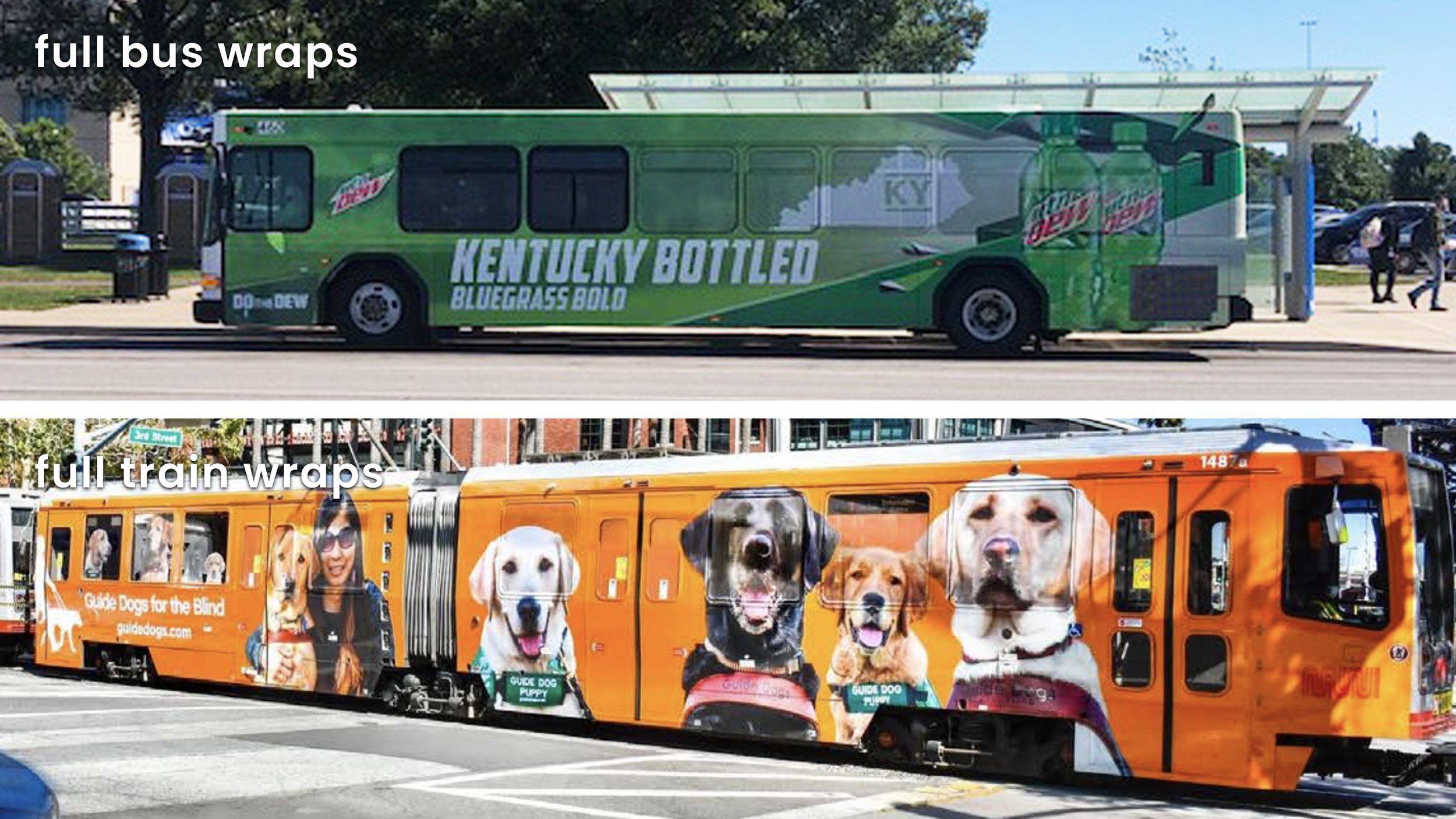
Full bus wraps and train wraps afford the reach and frequency of transit displays while allowing for an advertising area the size of a billboard. This large size provides for creativity and dramatic impact. As a result, full wraps are eye-catching, memorable displays that create quick recall.

Many subways and rail systems offer advertising space on train exteriors as an effective way to reach business commuters, and leisure travelers, in major markets. Train exteriors are great for achieving impressions in upscale areas that are not often reached by traditional out-of-home media. They also tend to achieve high frequency with daily riders.

Interior cards enable advertisers to reach urban commuters and minorities. They read to captive audiences and offer multiple exposures to a message over long periods of time — the average ride is 30 minutes. Interior cards are most often 11" H x 28" W, but are sometimes also 22" H x 21" W.
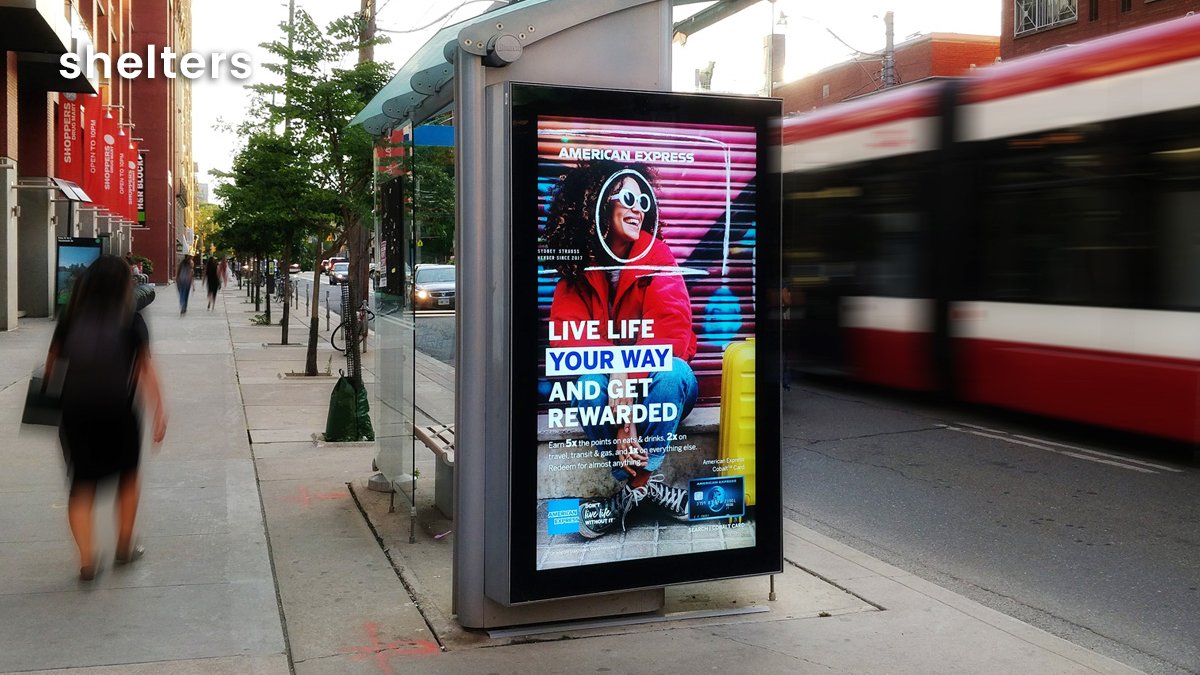
Transit shelters provide coverage in areas zoned out to other media, reaching pedestrian and vehicular traffic alike. When purchased in showings they can create broad rapid reach and high frequency. Sizes vary by market, but the most common size is approx. 67" H x 46" W.
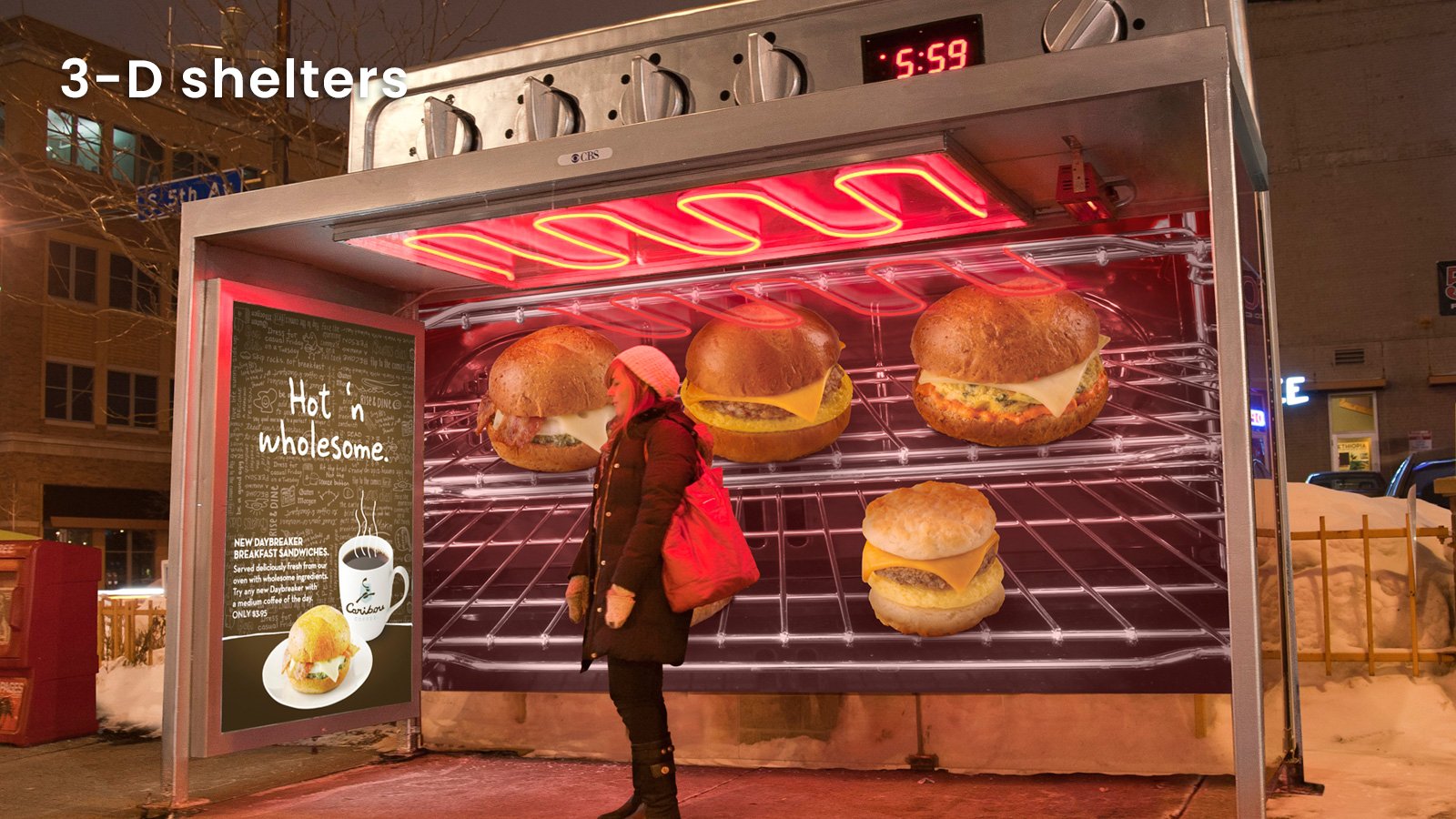
Transit shelters can also sometimes accomodate 3-D embellishments, transforming standard shelter structures into eye-grabbing displays that leave a lasting impression.
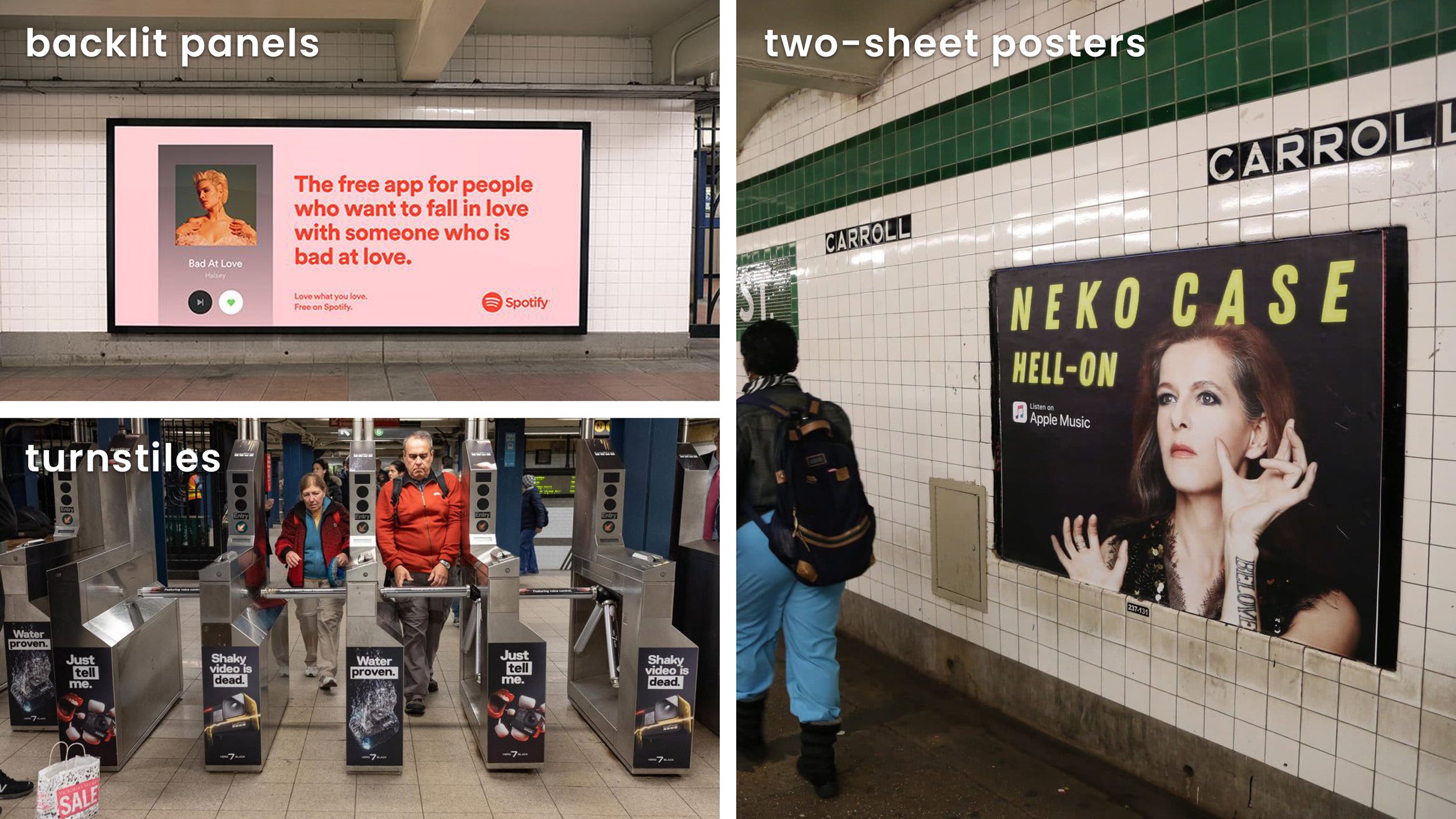
Subways and rail systems offer a variety of station media that can be used to reach riders in major markets. Some examples include two-sheet posters, turnstiles and backlit panels. Station media delivers messages in uncluttered, visually stimulating environments, and can be employed for its targetability. It's often used in conjunction with other OOH formats.
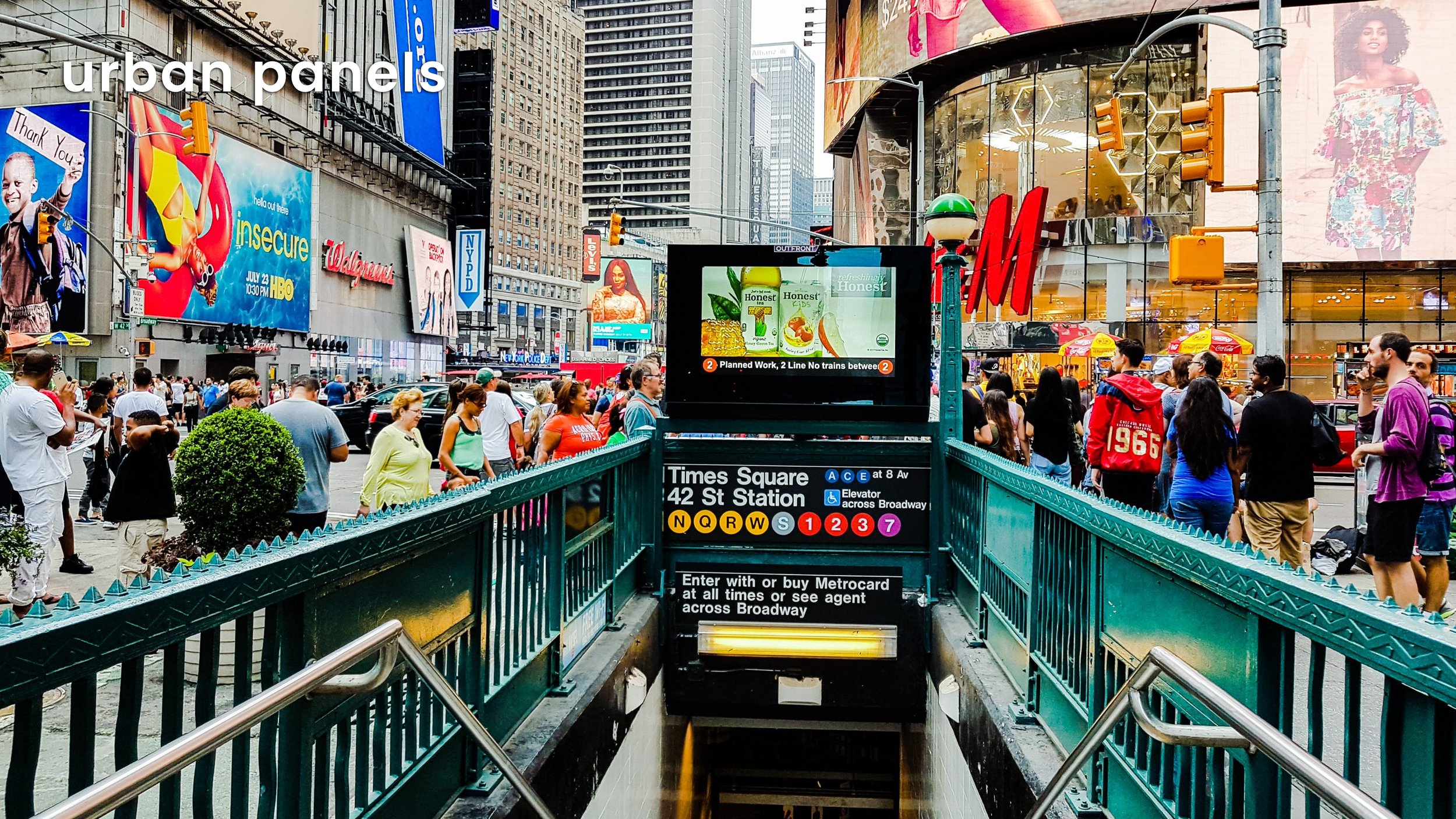
Urban panels can be either static or digital and are available in major markets, positioned above entrances to subway and rail stations. Because of their unique location, they are viewed by both street-level pedestrian traffic as well as rail system riders.
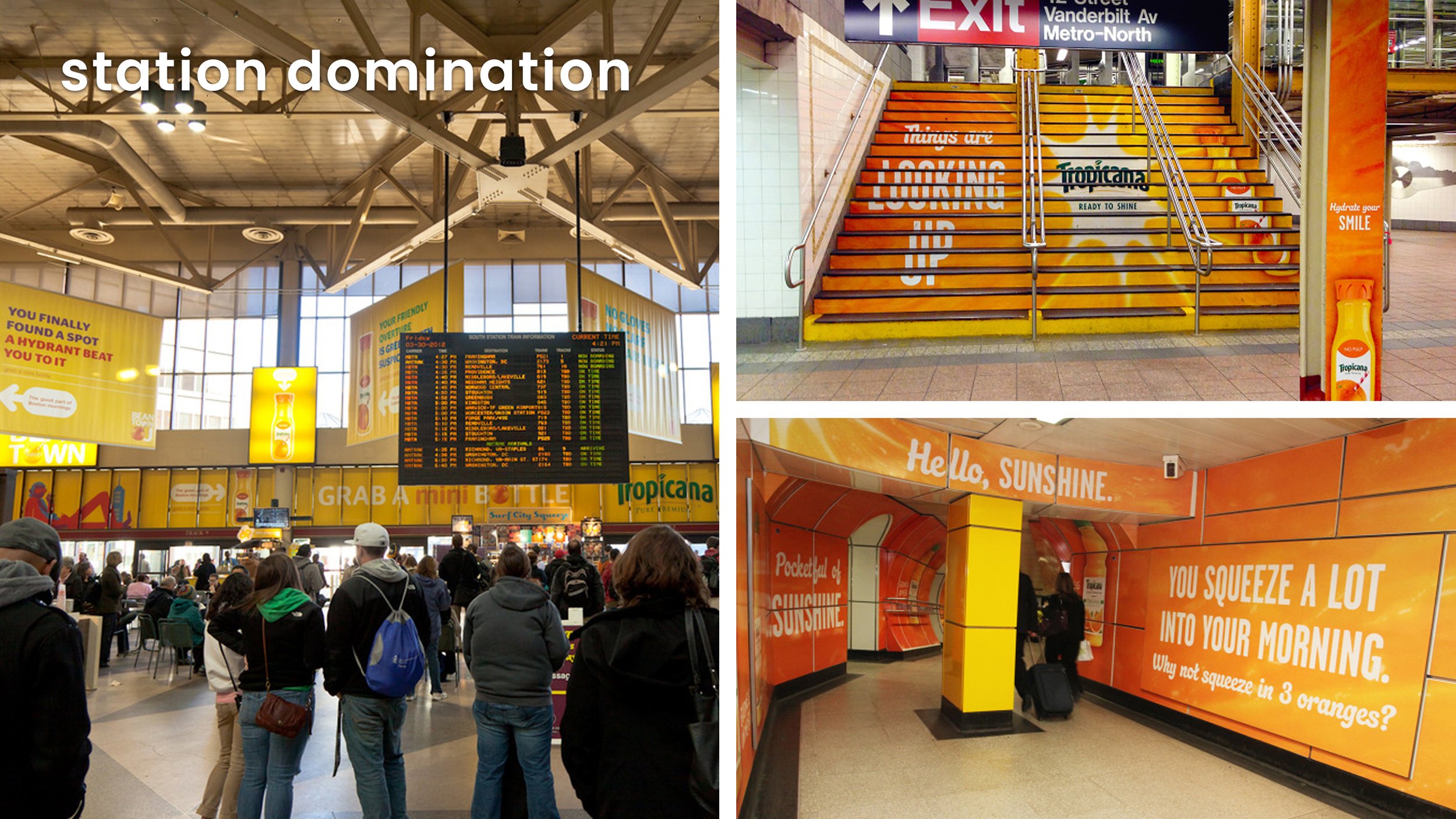
Station domination invites an advertiser to completely dominate a transit station with specialized displays across all available media within, creating an unforgettable full brand environment that surrounds commuters twice a day.
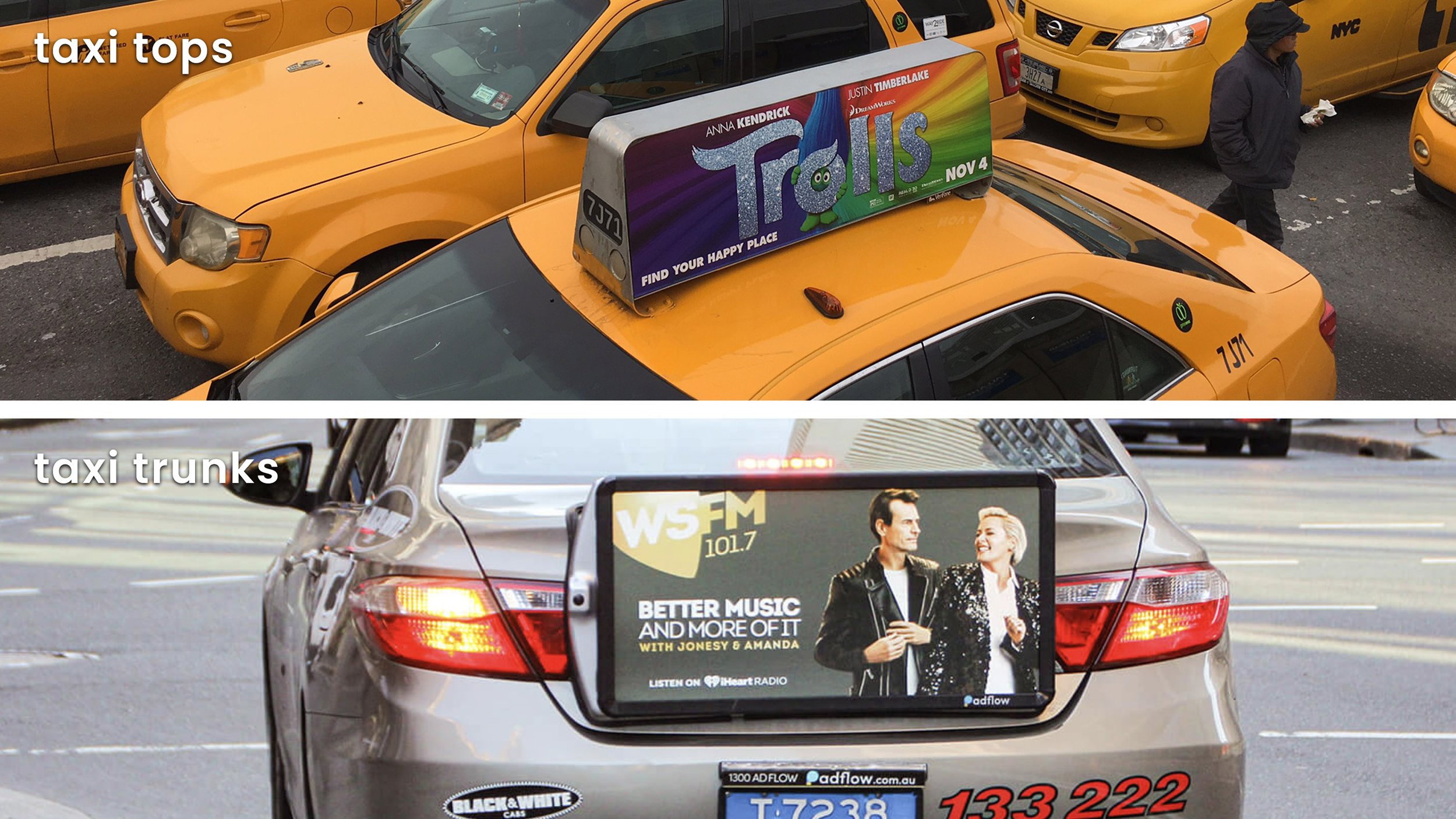
Taxicabs offer advertising space on their tops, trunks or internally that reach both business and tourist traffic. Taxicab ads are typically purchased in showings.
